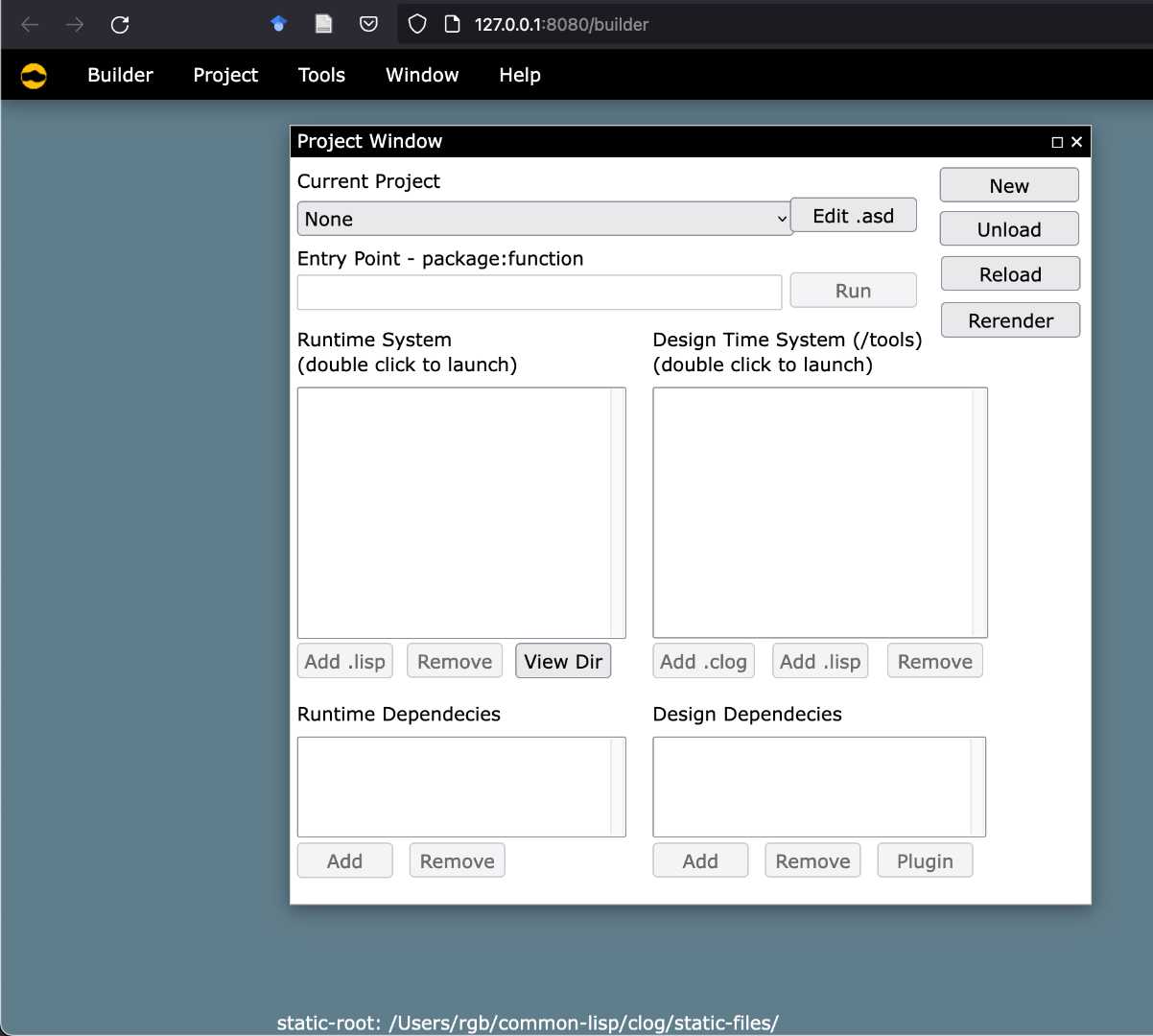The Common Lisp Omnificient GUI, CLOG for short, uses web technology to produce graphical user interfaces for applications locally or remotely. CLOG can take the place, or work along side, most cross platform GUI frameworks and website frameworks. The CLOG package starts up the connectivity to the browser or other websocket client (often a browser embedded in a native template application.) manual ![]() , github
, github ![]()

Builder
You can also open a "clog-repl" window in your browser to play from the common-lisp repl:
CL-USER> (in-package clog-user) CLOG-USER> (clog-repl) CLOG-USER> (setf (background-color *body*) "beige") CLOG-USER> (create-div *body* :content "Hello World!")
The clog-repl URL is http://127.0.0.1:8080/repl body will always refer to the last access of that URL.
To open a browser with the CLOG manual:
CL-USER> (clog:open-manual)
The key to CLOG is the relationship it forms with a Browser window or Browser control compiled to native code. CLOG uses websockets for communications and the browser to render a GUI that maintains an active soft realtime connection. For most CLOG applications all programming logic, events and decisions are done on the server which can be local, or remote over the web.
# CLOG Programming Basics
Prerequisites- You don't have to be an expert in Common Lisp but should know the basics * You don't need to know JavaScript * You don't need to know HTML but it helps unless someone else is doing the design work. * You have installed CLOG and (ql:quickload :clog) is working for you. Simple REPL techniques Tutorial
YOUTUBE Z56WxyFb2rI Experience with clog and cl-collider